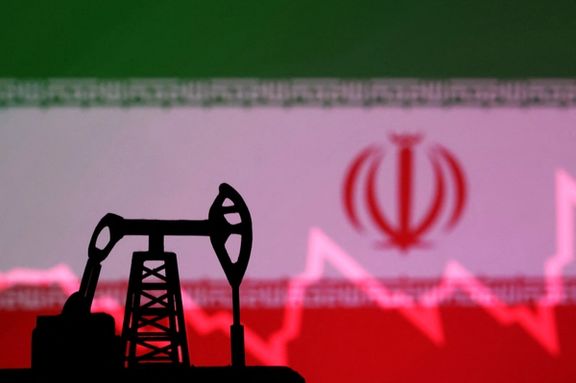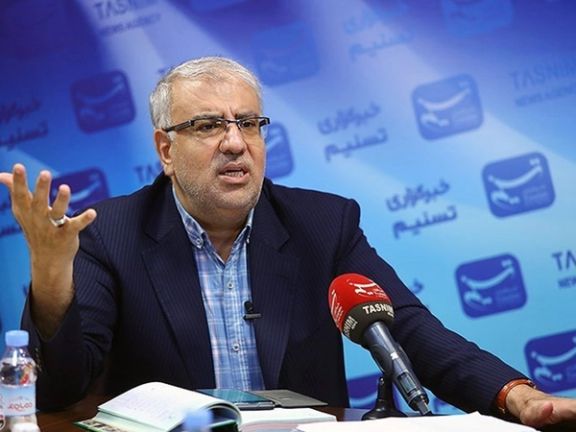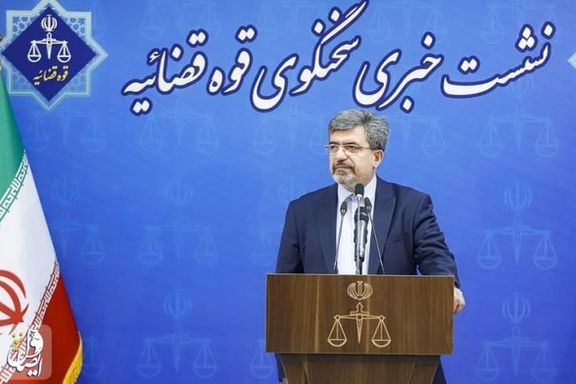US Concerned Iran May Give Short-Range Ballistic Missiles To Russia

White House spokesman John Kirby said on Tuesday that Iran may be considering to provide Russia with ballistic missiles for use in Ukraine.

White House spokesman John Kirby said on Tuesday that Iran may be considering to provide Russia with ballistic missiles for use in Ukraine.
He further stated that the United States would monitor the situation between Iran and Russia and take appropriate action as needed.
Iran has already provided Russia with armed drones, guided aerial bombs and artillery shells, the Wall Street Journal cited US officials as saying on Tuesday.
The WSJ report said Washington’s concern about the expanding military cooperation between Iran and Russia grew when Iran showed its Ababil and Fateh-110 missiles to Russian Defense Minister Sergei Shoigu when he visited Tehran in September.
“We are therefore concerned that Iran is considering providing Russia with ballistic missiles for use in Ukraine,” a spokesman for the National Security Council said.
In October, when UN sanctions on Iran's missile program expired, Russia announced plans to deepen military ties with Tehran. "Now, after the expiration of some restrictive provisions of resolution 2231, there are fewer such restrictive regimes. Naturally, we will be using this, and it should not raise any questions for anyone,” Russia's Deputy Foreign Minister Sergei Ryabkov said.
Tehran has denied allegations of sending armed drones to Russia during Moscow's invasion of Ukraine. The Iranian government stated that any such shipments, if they did occured, took place before the war.
Nevertheless, Russia's utilization of Iranian-made drones for attacks on Ukrainian infrastructure and civilian targets has drawn international criticism. Western powers have raised concerns over Iran's involvement in arming Russia, along with the possibility of supplying additional weaponry and ammunition.

The US has carried out an airstrike on a vehicle in the proximity of Al-Asad airbase in Iraq which hosts American troops, killing several Iran-affiliated militants.
US forces came under attack at the Ain al-Asad airbase west of Baghdad early on Tuesday and troops responded in self-defense, US military officials said. This was first reported US response in Iraq to dozens of recent attacks. Located in the western Anbar province, Ain al-Asad air base is regularly targeted by militia rockets or missiles since the Gaza war began on October 7.
The attack against Ain al-Asad caused minor injuries and damage to infrastructure, one official told Reuters, another saying American forces used an AC-130 gunship to hit the militants.
Iran-backed militias have been targeting American forces almost daily for over a month, totaling 65 attacks in which about 60 staff have been wounded. They say their operations are in support of Palestinians and will continue as long as the United States backs the Israeli onslaught on Gaza. Thousands of terrorists invaded Israel killing at least 1,200 mostly civilians in the single most deadly day for Jews since the Holocaust. While Iran denies involvement, it funds the group tens of millions each year and supports it militarily.
Deputy Pentagon Press Secretary Sabrina Singh said Tuesday that the US' AC-130 was "already in the area" when the Ain al-Asad airbase was targeted by the missile attack, enabling it to track the point of origin of the attack and killing the Iran-linked militants who fired at the base. She said this is the difference between this retaliatory attack in Iraq and the three previous ones in Syria which "were pre-planned." The majority of US targets are storhouses or shipments of weapons.
Singh was questioned about a call by Senator Lindsey Graham who has called for a direct military action against Iran, instead of its proxy groups in Iraq and Syria. Dodging a direct answer, she said the US targets are selected to hit Iran where it hurts.
The latest military response to attacks against American forces was the fourth time the US carried out an airstrike since the attacks ramped up in October. The other attacks happened on October 26, November 8 and 12, all in Syria.
The Biden administration is under fire by lawmakers and critics for lack of action in dealing with Iran-backed attacks on US facilities across the region.
Earlier on Tuesday, social media accounts linked to Iran-aligned Iraqi militias published a statement in the name of the "Islamic Resistance in Iraq", mourning a member who they said had been killed "in battle" against US forces.
His killing is the first reported casualty in Iraq linked to the Israel-Gaza war, which has drawn in other factions in Iran's network of regional proxies, such as Lebanon's Hezbollah and Iraq's Kataeb Hezbollah.
While Iran has so far stayed out of direct military action in support of Hamas, it has used its proxy forces not only to attack US forces but also targets in Israel and in the Red Sea. Yemen's Houthis have launched drones and missiles against Israel and seized a commercial vessel in the Red Sea on Monday, which is partially owned by an Israeli.

Following the furore over students being allowed to attend a graduation ceremony without mandatory hijab, the dean of Iran’s Sharif University has been fired.
Mohammad Ali Zolfigol, the Minister of Science, issued a decree removing Rasoul Jalili from his position and introduced Abbas Mousavi as the new acting head of the university.
The graduation ceremony for 81 students from the international campus of Sharif University of Technology took place on Kish Island last Thursday. According to videos shared on social media, many female graduates were seen without mandatory hijab, wearing graduation uniforms.
Following that, the chancellor of Kish campus was dismissed. On Saturday, the AmirKabir Telegram channel reported that, following threats from the ministries of science and intelligence, Ali Selk Ghaffari, the chancellor of Kish campus, had been "forced to resign."
The dismissal will come as a shock for many, knowing Jalili as a key figure in the Khamenei inner circle. In 2012, Jalili was appointed as a member of the Supreme Council of Cyberspace by the decree of Supreme Leader and was previously named as one of the organizers of "digital suppression," leading to his inclusion in the US sanctions list.
Since the protests following the death of Mahsa Amini in morality police detention, many students, especially female ones, have openly and practically opposed mandatory hijab. As dissent deepens, universities have stepped up security and surveillance, in line with that seen across public spaces in Iran.

Iran’s oil production should increase from 3.4 million barrels per day to 3.6 million by the end of the Iranian year on March 20, Oil Minister Javad Owji said on Tuesday.
"We aim to reach 4 million barrels per day of oil production for next year," Fars news affiliated with the Revolutionary Guard cited Owji as saying, referring to the next Iranian year starting March 20, 2024.
Iran has increased its daily crude exports to around 1.5 million barrels this year, but a substantial part of the shipments came from stockpiled oil on tankers and ground facilities. These stocks have dwindled and if Iran wants to keep up the pace of exports, it has to increase production.
A regional oil expert told Iran International that in mid-2022, Tehran had a stockpile of 115 million barrels, but it sold most of the oil and now has 27 million barrels left, barely enough to sustain one month of exports.
China is the main buyer, despite full US sanctions imposed on Iranian oil exports in May 2019. Initially, Iran’s shipments dropped significantly to around 300,000 barrels per day, but after the Biden administration launched indirect talks with Tehran to revive the JCPOA nuclear deal, Chinese purchases increased. Many believe that the United States has been soft on cracking down, in order not to jeopardize chances for a nuclear deal.
The oil minister praised the current government for making substantial investments in the oil and gas sectors. He stated that 132 projects have been completed at a cost of $28.5 billion and there are 50 other planned projects that will cost $47.5 billion.
These numbers seem to be too high given Iran’s financial crisis, with the national currency near its all-time lows at 500,000 per US dollar and inflation surpassing 50 percent. If the government is investing its windfall revenues from increased oil exports back into the oil industry, it could be considered a great planning. However, no one knows how much Iran earns from its oil exports, as it is categorized as a national security matter.

However, Owji’s pledge to boost production faces its own challenges. Iran has a serious shortage of natural gas, despite holding the world’s second biggest reserves. The government is juggling between ever-increasing domestic consumer and commercial demand and its need for power generation, exports and using needed gas for oil production.
To prevent a rapid decline in production, Iran needs to re-inject nearly 300 million cubic meters of gas per day (mcm/d) into its old oil deposits. However, the latest available official data reveals that the actual daily gas re-injection in 2018 was less than 37 million cubic meters. The situation must have deteriorated even further in the past five years, as gas production rapidly declines. Its daily production hardly reaches 800 mcm.
In addition, advanced foreign technology is needed, which is very difficult to secure amid US sanctions. The lack of technology hurts both gas and oil production. Even the Chinese and the Russians have not been wiling to render any significant assistance.
In the meantime, Iran’s economy minister revealed on Tuesday that the government is basing next year’s budget on daily exports of 1.35 million barrels per day, which is realistic. However, the price the government expects to get at 65 euros per barrel seems greatly optimistic. Given Iran’s current tight state of finances and shortages of foreign currencies, it is more likely that it offers steep discounts to buyers or loses money in the process of illicit oil shipments.
In previous years also the budget was based on rosy calculations and then faced huge deficits. At least half of the government’s operating budget comes from oil exports.

Masoud Setayeshi, the spokesperson for Iran's Judiciary, has called on the Swedish appeal court to ensure a fair and correct proceeding for former Iranian jailor Hamid Nouri.
Nouri, a former deputy prosecutor at Gohardasht Prison near Tehran was sentenced to life in prison by a Swedish court last year for his alleged role in the purge of political prisoners in Iran during the 1988 killings.
Speaking on Tuesday, Setayeshi emphasized the need for the judge to conduct the proceedings with “correctness, honesty, and without bias, considering both God and the law.” He cautioned against the influence of “political atmospheres, highlighting the importance of adherence to principles of justice and legality.”
Setayeshi's call flies in the face of the fact that the Iranian regime regularly conducts unjust court proceedings and delivers biased rulings. Innumerable sentences have been given without fair trial or proper legal representation. Both historical records and recent evidence by legal experts and rights groups suggest that the death penalty is wielded by the Islamic Republic as a means of political repression, particularly to instill fear among opposition forces. In trials that may result in death sentences for defendants, Iran's Judiciary prohibits protesters and dissidents from selecting their legal representation.
In Iran, individuals on trial for crimes against national security can only be represented by lawyers with the "endorsement" of the chief justice. Dissidents facing charges related to national security, insulting the Supreme Leader, or unlawful assembly often have limited options for legal representation.
Protesters are sometimes charged with offenses such as "corruption on earth" or "waging war against God," both of which carry the death penalty. Iran's revolutionary courts have sentenced numerous protesters to death on such charges, with seven executions reported so far and others facing the same fate.

The Iran Migration Observatory (IMO) has raised alarms over what it describes as an "uncontrolled mass emigration" currently occurring in Iran.
According to data from the Organization for Economic Co-operation and Development (OECD), Iran witnessed the world's fastest growth in migration rates to wealthy countries between 2020 and 2021, with numbers soaring from approximately 48,000 in 2020 to 115,000 in the following year—an increase of 141 percent.
An analysis conducted by the IMO, using data from the UN Refugee Agency (UNHCR), revealed that the number of new asylum applications globally by Iranians in 2022 increased by 44 percent compared to the previous year.
Simultaneously, the IMO reported that the number of Iranians studying abroad has been on the rise for eight consecutive years, climbing from 49,000 in 2013 to 70,000 in 2021.
Economic and political factors are identified as the primary drivers behind the mass migration. Iran has grappled with an inflation rate exceeding 40 percent for the past four years, exacerbated by US-led sanctions imposed over Tehran's nuclear program. Additionally, a heavy crackdown on dissent, following mass protests triggered by the death of Mahsa Amini in police custody, and continued geopolitical tensions contributed to the exodus.
Traditionally, Iranian migrants have sought destinations in the US, Australia, Canada, and Europe. However, the ongoing development in the Persian Gulf region has made Arab states such as the UAE, Qatar, and Oman increasingly attractive for job seekers. Turkey has also gained popularity as a destination in recent years.
The departing population comprises not only professionals like athletes, artists, skilled workers, and technicians from the affluent elite but also a significant number of poorer Iranians attempting perilous journeys to reach western countries.